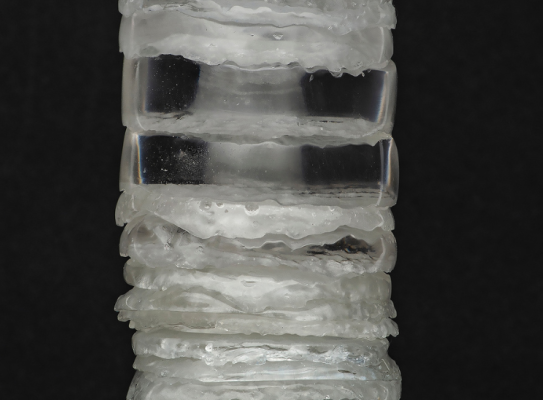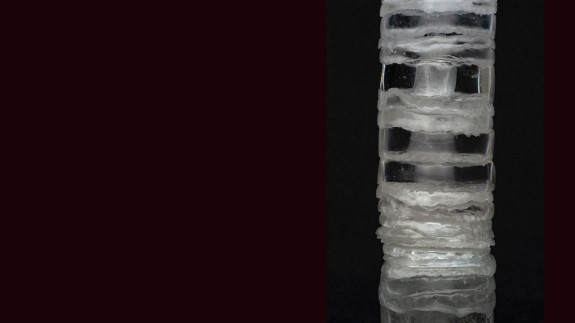
Art meets science in an intriguing collaboration

This year GNS Science hosted visiting US glass artist and Fulbright scholar Anna Lehner. A glass sculpture called Shifting Foundations resulted from the connection.
Anna likes to explore themes of geohazards and earth sciences – drawn to the boundaries where the tectonic plates come together and collide, and where they separate to form new bedrock.
“I started out working with glass in a traditional studio setting” says Anna. “After a few years I wanted to challenge myself to incorporate larger themes and concepts into my practise. In graduate school my work started to explore inquiry about the natural environment. I was particularly interested in themes about our geophysical environment and natural hazards.”
Geologic forces connect to the materials Anna uses, with themes of time, temperature, stress and fracture inherent in working with glass as a medium. Anna’s interest in seismic activity grew during time spent at the University of Wisconsin-Madison. Anna began working with US Geological Survey data to code artworks that interacted with earthquake notifications.
In developing my proposal for the Fulbright program, Aotearoa New Zealand was the perfect choice to explore these themes because of its seismic activity.
“I had connected with Dr Laura Wallace at GNS Science in 2018. Through conversations with her and Dr Jamie Howarth, possibilities grew into reality. GNS and VUW were the perfect institutions to call my home base. I was able to work and have discussions with scientists, PhD candidates and researchers who all study these hazards.”
Early in the visit, Anna joined our scientists on field trips, including a lake-coring trip in the South Island. Anna found the ethereal CT scans of turbidite cores to be a point of inspiration, fascinated by how much information was held by such fragile layers.

The resulting work – Shifting Foundations – is a glass sculpture inspired by a section of sediment core taken from the Hikurangi Subduction Margin. The specific core was taken from the Campbell Canyon showing the seafloor effects from the complex Mw 7.8 Kaikōura earthquake in 2016.
The sculpture is on display in the GNS Science foyer at Avalon, Lower Hutt.
Anna hopes to create a series of three-metre high glass sculptures to convey the same concept.
In this video, Anna talks about the creative process, what it's been like to work with scientists, and Jamie Howarth explains the science it represents.

Art Meets Science | Shifting Foundations – In this video, Anna talks about the creative process, what it's been like to work with scientists, and Dr Jamie Howarth explains the science it represents. transcript
